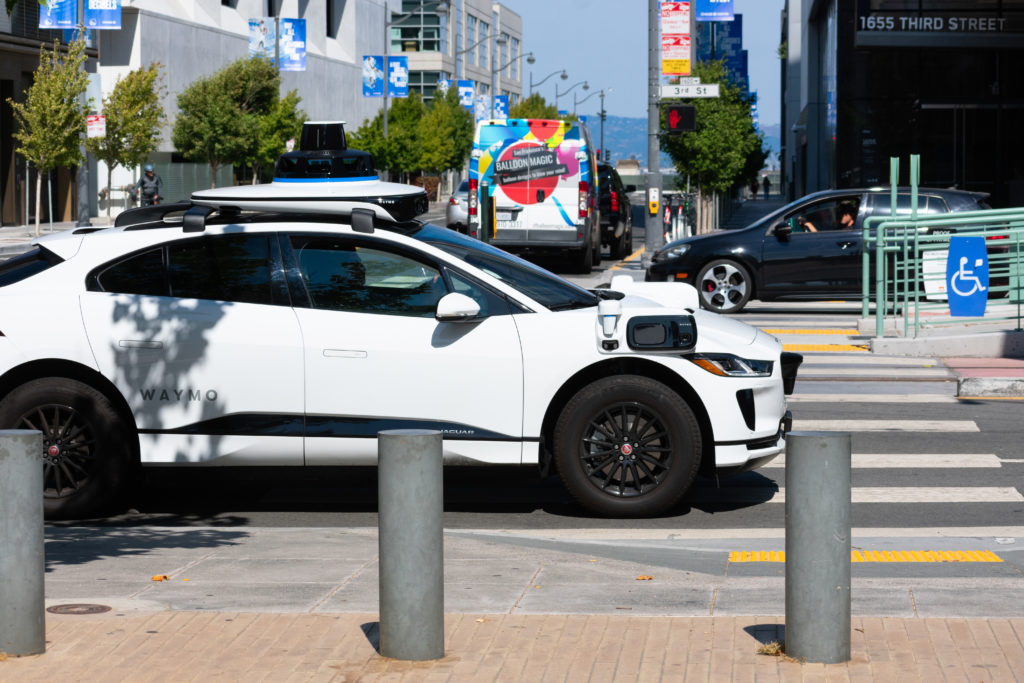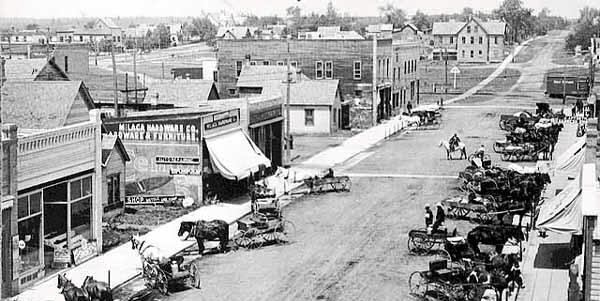
Thanks in no small part to those CES conferences we attend, and the Techsurveys we conduct, I frequently find myself in situations where I’m talking about the future. It could be media, automotive, Artificial Intelligence, and Twitch.
And inevitably, the predictable question will be asked:
“How long will it take before it scales?”
And that often translates to this:
“I’m hoping it will take years and years, because I’ll probably be retired by then.”
I get it. We want our lives and our jobs to have a certain order to them. For the sake of security – “especially in these unprecedented times” – we want to know our career path will be stable. We fear disruption because it could negatively impact our life or career path.
But as media guru Rishad Tobaccowala said in a recent interview in The Drum:
“Change sucks, but irrelevance is even worse.”
You simply cannot wish technology away. Over the years, I’ve watched radio people try to do that with the Internet, iPods, and satellite radio. When something becomes a bona fide trend – or even a megatrend – it’s usually not a matter of whether it will happen, but when it will reach “mass” and become a part of our lives.
It is times like this I think about my friend, John Ellis, a wise automotive and technology expert whose speaking style can be blunt, raw, and even controversial. But his “take” on the role of automotive in our world has been remarkably accurate. He recently put many of his thoughts down on paper for a book “The Zero Dollar Car: How the revolution in Big Data will Change Your Life.”
technology expert whose speaking style can be blunt, raw, and even controversial. But his “take” on the role of automotive in our world has been remarkably accurate. He recently put many of his thoughts down on paper for a book “The Zero Dollar Car: How the revolution in Big Data will Change Your Life.”
At a car symposium we organized last year in Detroit for a group of broadcasters, John was speaking about sweeping automotive trends, specifically electrification and autonomous.
As he explained how these technologies were becoming more sophisticated and street-ready, the inevitable question of when we would actually start commonly seeing these vehicles on our streets and highways.
After all, doesn’t it take a long time before even megatrends become ubiquitous in a society like ours, especially when the average vehicle on American roads is more than 12 years-old? And won’t the supply chain shortages of the past couple years delay the coming of electric and autonomous cars?
We’re still waiting on flying cars (although we’re getting closer to them, too). Doesn’t it take decades for megatrends like these to take root?
 Ellis fired off the response that has stuck with me all these months, and I think about a lot lately.
Ellis fired off the response that has stuck with me all these months, and I think about a lot lately.
“Megatrends happen slowly…until they don’t.”
And Ellis went on to explain. He used his quote to tee up up the relationship between technology trends and our lives.
And he told the story that in America back in 1907, there were only 14,000 or so cars on the road, and fewer than 3000 trucks, according to Scientific American.

While the horse was being phased out, soon relegated to racing and other leisurely pursuits, most people were getting from Point A to Point B via train, bicycles, and on foot. The car was nowhere near being ubiquitous because only the upper crust could afford one and they weren’t simple to manufacture.
By 1917 – just 10 years later – there were nearly 400,000 cars and trucks on the road – a 33x increase. Here’s how Scientific American summed it up:
“In one decade, cars replaced horses (and bicycles) as the standard form of transport for people and goods in the United States.”
Horses rapidly became an “imperiled minority” on American streets.
What happened? Technology.

Enter Henry Ford, the assembly line, and a vehicle that was simple to mass produce. Think about this: a Ford Model T had a sticker price of $850 in 1908. Just eight years later, they sold for $260. At that price, cars became affordable for millions of American families and businesses.
And that was in a world without the Internet, microchips, or integrated circuitry. No smartphones, no Zoom, no radio or TV.
And Ellis’ quote was ringing in my head this week when I saw the photo at the top of today’s blog post. You’re looking at a Waymo autonomous car – not on a test track, but on the streets of San Francisco. Waymo is Google’s autonomous division, and they’ve been “at it” now for 13 years.
If you’ve spent any time driving in “the city by the Bay,” you know it can be fraught with danger at every turn – literally. Hairpin turns, steep hills, drastic drops, heavy traffic, pedestrians – it’s all there.
According to The Verge, the undaunted Waymo will be offering rides – without safety humans in their vehicles – to employees, as well as member of their “Trusted Tester” program in San Francisco. That means people like you me.
Much of Waymo’s activity has been in Arizona where it is arguably easier to test and perfect autonomous technology. The streets are generally flat, and they have fewer twists, turns, ups, and downs.
Waymo has already been offering driverless rides in Phoenix suburbs like Chandler, Gilbert, Mesa, and Tempe. Now, they’re coming to the downtown area via commercial services like Argo AI (a Ford/VW supported company). A competitor (backed by GM) called Cruise offers driverless rides in vehicles named Poppy and Tostada.

Waymo has had practice avoiding street cars, pedestrians, and other vehicles in San Francisco for a decade. In California, Waymo logged more than 2 million autonomous miles, up from 1.45 million in 2019.
But autonomous cars on a race track, speeding along at 170 mph? We saw it for ourselves at CES in January at a competition at the Las Vegas Motor Speedway. Teams of college students from around the world worked on identically equipped Indy cars with a goal of making them go faster – without incident. Without drivers, there is no speed limit, a completely different dimension for auto racing.
around the world worked on identically equipped Indy cars with a goal of making them go faster – without incident. Without drivers, there is no speed limit, a completely different dimension for auto racing.
How long before driverless taxis hit your city or town? Success under arduous driving conditions in San Francisco and downtown Phoenix should pave the way for this megatrend to realize its potential before we know it.
Consumers still say they’re not ready for autonomous – but most of us have never experienced it. After a two year hiatus in Techsurvey, we brought the question of autonomous acceptance back this year. Most consumers need more information at best, or negative at worst:

Clearly, the trendline is actually heading negative on cars that drive itself. So, how could any rational observer of cars and technology conclude they may be right around the next corner?
Because when people actually ride in these vehicles, they have a tendency to adjust, get comfortable, and adapt.
CNBC reporter Michael Wayland gave the experience a test drive in a Waymo van in Phoenix last week. Describing the ride as “liberating,” Wayland said he preferred it to being on a crowded plane.
Once he got comfortable, he got on the phone, tweeted, and even changed his destination. In fact, he Facetimed his 5-year old daughter who took one look inside the vehicle, and declared:
“A ghost is driving the car.”
My prediction? It won’t take long before there will be a lot of ghosts.
- Media And Technology In 2025: Believe It Or Not! - April 18, 2025
- In Radio, You Just Never Know - April 17, 2025
- The Secret To Making A Great Podcast (And Great Radio) - April 16, 2025




Ghosts. And lots of ’em. Bit career boost for Scooby Doo maybe. Those weren’t real ghosts either. Broadcasters, not so much. Autonomous drivers are not a great thing for car radio listenership.
You are so right, Ed. The growing number of video screens in these vehicles will make it easier to watch stuff. Another great reason why radio station’s need video strategies – as counter-intuitive as that sounds.
Mr Ellis’s observation echoes Ernest Hemingway’s reply when asked how he’d gone bankrupt: “Slowly at first, and then very quickly.” (I rather hope the invasion of Ukraine ends the same way.)
Being from San Francisco, Fred, I have to say that for autonomous vehicles it’s the acid test (pardon the expression). If they can make it on the streets and hills of my home town, they can make it anywhere, in this country at least. They’re not likely to be viewed just like a smaller bus, however. Though I’m only guessing, I suspect that for years after these vehicles become available many of their passengers won’t take quickly to video screens; they’ll instinctively keep their eyes on their surroundings, either as sceptics or maybe just enjoying the scenery, but local radio can still have a role–if programmed well. In other words, today’s challenge looks to me a lot like tomorrow’s as well.
John, I’m in lock-step with you about the San Francisco thing. To turn the “New York, New York” phrase a bit, “if they can drive safely there, they can drive safely anywhere.”
Regarding what we’ll do in those vehicles, I believe it will run the gamut. Younger people – for whom the technology is more welcome anyway – will take to it quickly, doing everything in these vehicles. I suspect us more mature types will require more time to get comfortable. If you read Mike Wayland’s story, he covers the experience well: the good, the not-so-good, and everything in between. I am personally looking forward to my first driverless ride.
Thanks for the comment, as always.
You have to wonder if upon climbing into a Waymo Gary Numan would still be singing…
Here in my car
I feel safest of all
I can lock all my doors
It’s the only way to live in cars
(Now get that ear worm out of your head!)
THANKS, DAVE! (Actually, it replaced “On Top of the World” by the Carpenters, so all good.)
Hahaha! I’m not surprised you wouldn’t like that song, Fred, and therein lies our difference. I marvel at our beautiful universe, while you look down on creation. (That’s the only explanation I can find.)
LOL
I’m not sure this is a threat to radio as long as radio is included in the driverless car. And it will be a godsend for people like one of my students, whose (successful) battle with brain cancer took away her periferal vision. Not to mention the independence it will give back to seniors whose kids took away their keys.
Dianna, you’ve hit on some of the less-talked-about aspect of autonomous – serving the needs of seniors (looking for revenge) and those with special needs. For those populations, the technology could be a game-changer. Thanks for the great comment.